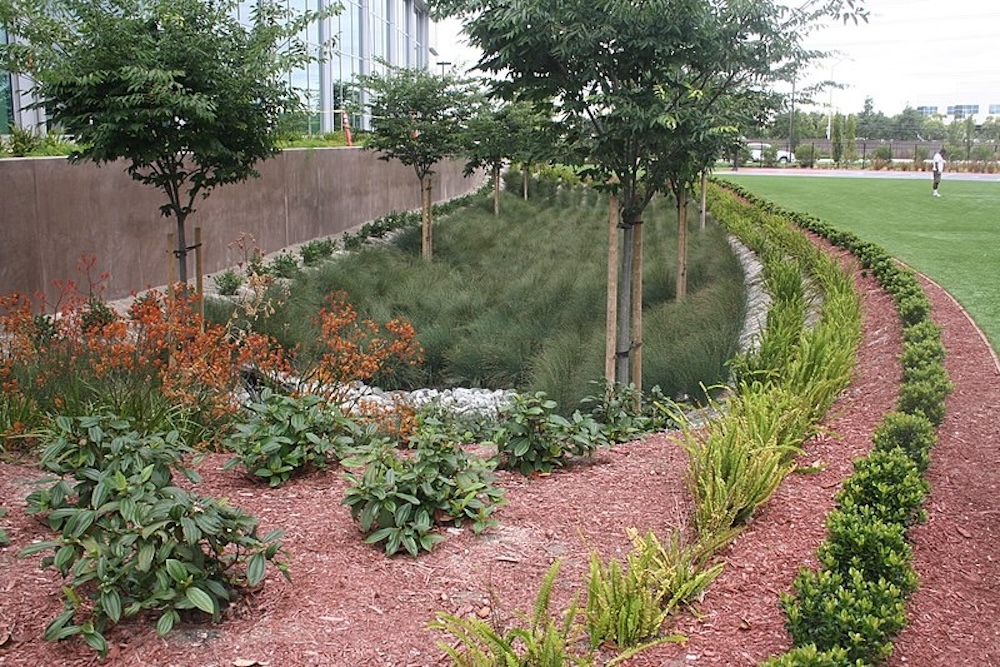Plants, including those in your backyard, can be one of our most effective tools in battling climate change.

Testing Plants for Myrtle Rust Resistance
Testing Plants for Myrtle Rust Resistance
Below is a table of results from tests completed in association with The University of Sydney.
The test was undertaken to determine the Myrtle Rust resistance of different plant and tree varieties. Testing was conducted by Dr. Karanjeet Sandhu, a Myrtle Rust Pathologist from the Plant Breeding Institute, Faculty of Agriculture & Environment from The University of Sydney.
Competitor and common Callistemon varietifes were tested April 2013 and found to be susceptible to Myrtle Rust.
This shows that our new and improved Callistemon varieties are tough and are either Moderately or Highly resistant to Myrtle Rust.
Myrtle Rust Result Interpretation
Note: This is a simplified version of the results table.
NOTE FOR QLD AND NORTHERN NSW: Myrtle Rust is more severe in these areas because of climatic conditions.
Therefore we recommend only using the plants listed as resistant or highly resistant in Queensland and Northern NSW. Plants listed as moderately resistant would be classed susceptible in Queensland and Northern NSW. For Sydney and south Myrtle Rust isn’t as severe and based on these tests the moderately resistant plants can be used.
| Common name | Botanical Name | Notes | Myrtle Rust Status |
|---|---|---|---|
| Callistemon Sample 1 | Fully developed pustules on leaves, low to high in frequency | Susceptible | |
| Callistemon Sample 2 | Fully developed pustules on leaves, low to high in frequency | Susceptible | |
| Callistemon Sample 3 | Fully developed pustules on leaves, low to high in frequency | Susceptible | |
| Callistemon Sample 4 | Fully developed pustules on leaves, low to high in frequency | Susceptible | |
| Callistemon Sample 5 | Small pustules without any chlorosis/necrosis and low in frequency | Moderately Susceptible | |
| Callistemon Sample 6 | Fully developed pustules on leaves, low to high in frequency | Susceptible | |
| Red Alert™ | Callistemon viminalis | Restricted pustule/dark gray surrounding/Necrosis | Moderately Resistant |
| Slim™ | Callistemon viminalis | No visible sign of infection | Highly Resistant |
| Floraburst™ | Callistemon viminalis | No visible sign of infection | Highly Resistant |
| Better John™ | Callistemon viminalis | Restricted pustule/dark gray surrounding/Necrosis | Moderately Resistant |
| Green John™ | Callistemon viminalis | No visible sign of infection | Highly Resistant |
| Macarthur™ | Callistemon viminalis | Mild hypersensitivity/Dark flecks | Resistant |
| Scarlet Flame™ | Callistemon viminalis | Fully developed pustules on leaves, low to high in frequency | Susceptible |
| Comon form | Callistemon viminalis | Fully developed pustules on leaves, low to high in frequency | Susceptible |
| Kings Park Special | Callistemon viminalis | Fully developed pustules on leaves, low to high in frequency | Susceptible |
| Captain Cook | Callistemon viminalis | Fully developed pustules on leaves, low to high in frequency | Susceptible |
| Little John | Callistemon viminalis | Fully developed pustules on leaves, low to high in frequency | Susceptible |
| Vintage Red™ | Eucalyptus cladocalyx | No visible sign of infection | Highly Resistant |
| Rivan™ | Kunzea ambigua | Fully developed pustules on leaves, low to high in frequency | Susceptible |
| Luscious® | Tristaniopsis laurina | No visible sign of infection | Highly Resistant |
| Sweeper™ | Waterhousea floribunda | No visible sign of infection | Highly Resistant |
| Red Head™ | Acmena smithii | No visible sign of infection | Highly Resistant |
| Pinnacle™ | Syzygium australe | Fully developed pustules on leaves, low to high in frequency | Susceptible |
| Sublime™ | Acmena smithii | No visible sign of infection | Highly Resistant |
| CONTROL | Syzygium jambos | Fully developed pustules in abundance, on leaves, twigs and buds | Highly Susceptible |
| CONTROL | Eucalyptus grandis | Fully developed pustules on leaves, low to high in frequency | Susceptible |




This Post Has 0 Comments